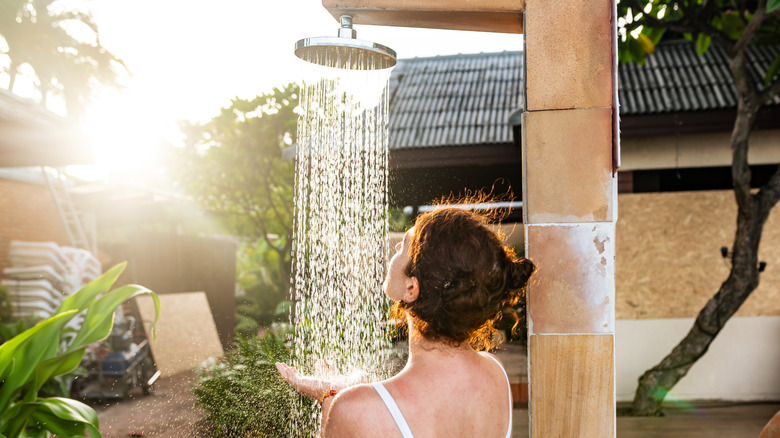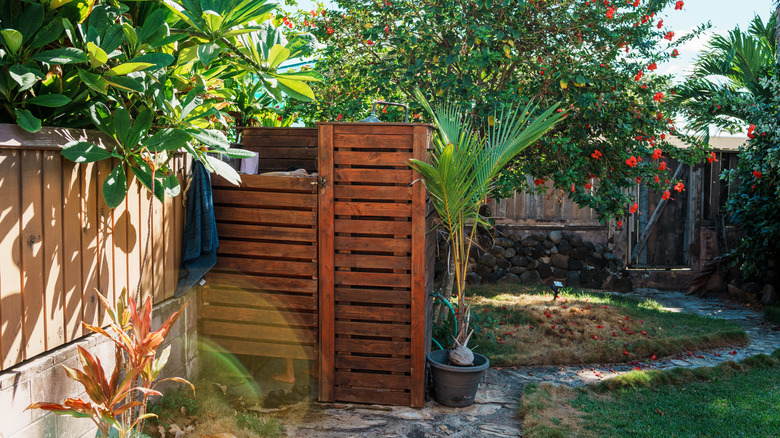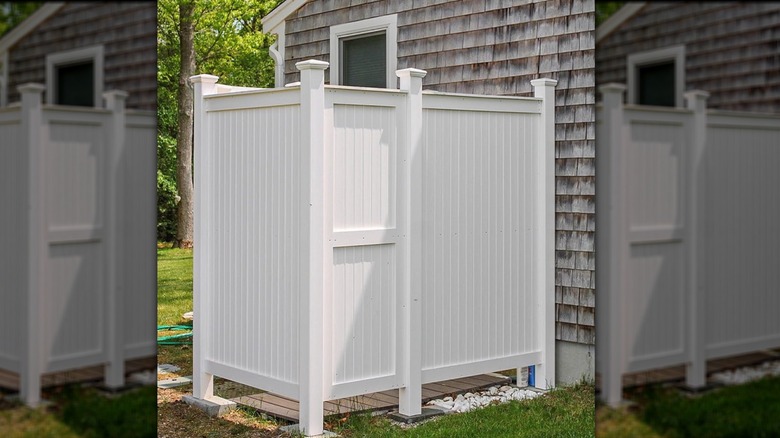Wood Vs PVC: What's The Best Material For An Outdoor Shower Enclosure
Building the perfect outdoor shower enclosure is a backyard upgrade that many homeowners dream of having. Who can blame them? It's practical and perfect for those days when you just want to enjoy the sun. An outdoor shower isn't just functional either. It can transform an otherwise bland outdoor space into an exciting retreat regardless of whether you live in a coastal paradise or a suburban haven. Imagine listening to the birds or the sway of the trees while enjoying a nice shower!
The catch here is that building one isn't just about picking a showerhead and calling it a day. There are a lot of factors to consider before installing an outdoor shower, including figuring out the best material for your shower enclosure. Since it affects not just how it looks but also how durable and easy it is to maintain, this decision requires significant attention. This will also impact how much it will cost to install the enclosure.
The choice often comes down to two popular options: wood or PVC. Wood is classic and easily adaptable while PVC is low maintenance and cheap. To choose the right material, you'll need to weigh the pros and cons to see what works best for your needs.
Wood is classic but expensive
Wood is a classic option. It brings a natural warmth and character that can instantly make your outdoor shower feel like an extension of your home. This material is also perfect for outdoor use since certain types — like cedar and ipe — are naturally resistant to moisture, insects, and decay. Wood can be easily incorporated into your design since you can paint it, stain it, or just let it age naturally into a cool silver-gray patina.
But using wood for your outdoor shower enclosure comes with a little more work. You will find yourself doing regular maintenance like sealing and staining to keep it from rotting or warping, especially if you decide not to use the more resistant varieties mentioned above. Weather-resistant options also tend to be pricier. However, the higher cost and consistent upkeep could be worth the extra investment if you want your outdoor shower to look amazing and last for years.
Just be sure to pick a variety that can handle the outdoors if you have decided on wood already. Teak and ipe are durable, but they do come with a higher price tag. Meanwhile cedar and redwood are more budget-friendly and still hold up really well. Just make sure the materials are installed and sealed properly to avoid water damage. For example, place the enclosure on a raised platform or a concrete base to keep it off of damp ground.
PVC is easy but limited in its aesthetic
If you're looking for a low-maintenance and stress-free option, then PVC could be your best bet for your outdoor shower enclosure. It is, after all, perfect for rainy or humid climates since its lightweight, non-absorbant material prevents the growth of mold and mildew. PVC is also easy to install and is less likely to warp or rot than wood. This means you'll probably spend less time trying to maintain your shower enclosure or shell out a high amount of money trying to build one.
There are a couple of things worth keeping in mind before making a final decision though. PVC doesn't have the natural charm that wood does, which is crucial if the rest of your yard has a rustic aesthetic. It doesn't help that you are limited to colors and finishes offered by manufacturers. Also, while it is durable, PVC is prone to cracking under extreme cold weather, so people living in colder climates might have to think twice before going this route.
But if you do choose PVC, remember to use panels that are outdoor-quality and include UV stabilization properties to prevent fading in the sun. Don't forget to also wash it with soap and water every now and then to keep it looking fresh. Ultimately, choosing between wood and PVC comes down to your priorities. Just remember that proper planning and installation are key to creating a beautiful outdoor shower enclosure no matter which material you choose!


